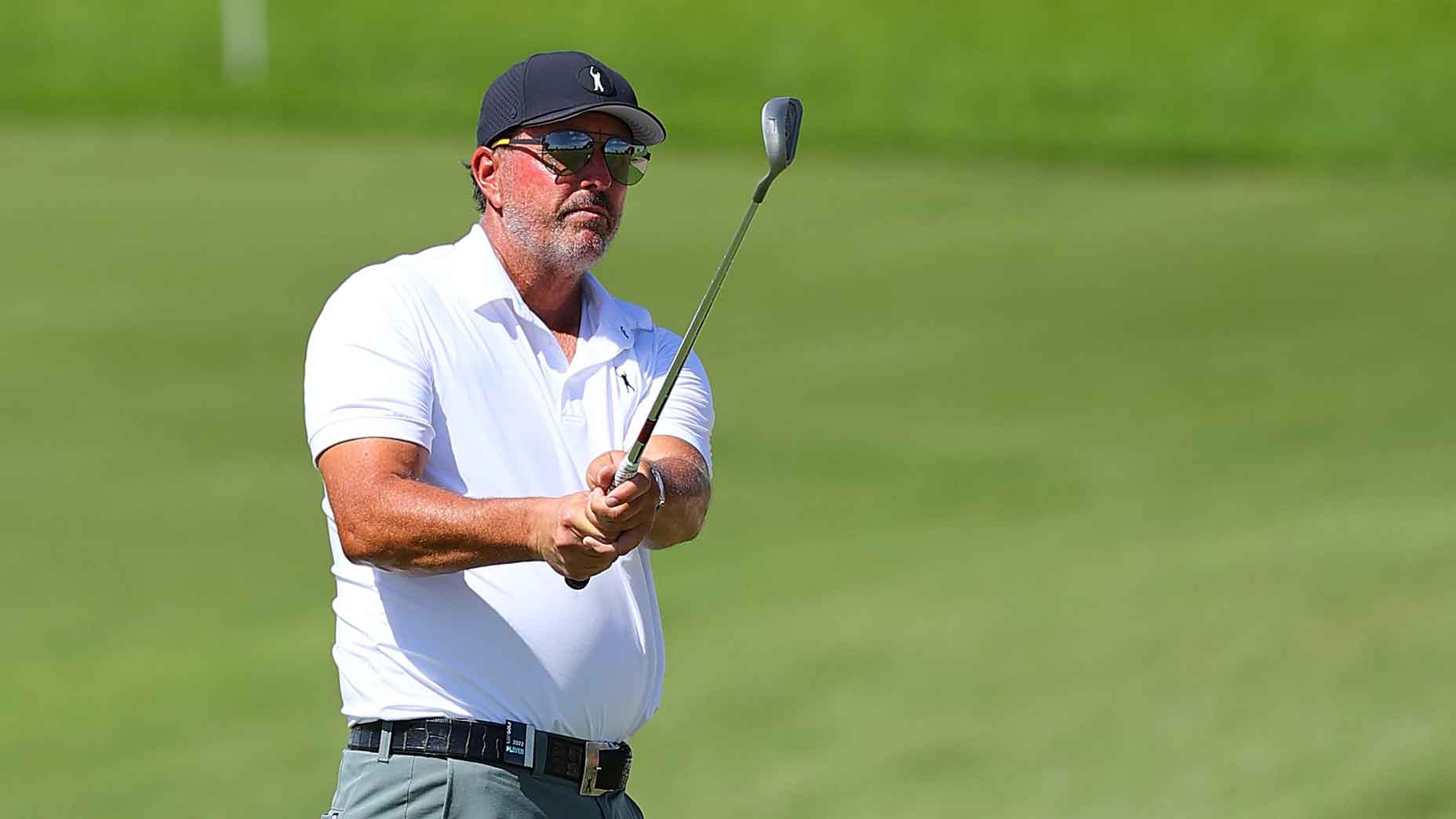When it comes to warming up, Phil Mickelson has plenty of boxes he needs to check until he’s ready to make his way to the first tee.
From stretching out to activating his muscles to dialing in his swing fundamentals — and plenty more in-between — the six-time major champion spends as much time getting ready for a round as some amateurs do playing a few holes.
Obviously, Mickelson knows what works, as he’s one of the greatest golfers of all time. So while we may never be able to hit it like him on the course, we can learn a few things about preparing ourselves to play our best.
In a recent episode of GOLF’s Warming Up, Mickelson talked to our Dylan Dethier about a number of topics. As someone who really struggles with approach shots under 100 yards, I took a keen interest in hearing Mickelson’s tips about those types of shots.
So take a look below to see the two variables Mickelson says every golfer must know (and understand!) in order to dial in your distances from under 100 yards. Chances are good that his info will help you improve, and, who knows, you may transform into the pin-seeker that you’ve always dreamt of becoming.
Editor’s Picks
Phil Mickelson’s keys to 100-yard shots
After some stretching to get his body loose and activate his muscles, Mickleson says he focuses on five sets of numbers to help him dial in his distances — which are all under 100 yards.
“I have set numbers that I build references to, and I always try to hit those numbers,” he says. “So I go 30, 45, 60, 75, 90, and I’ll start with those numbers.”
Dethier then asks how Mickelson’s warm-up has changed over the past 25 years, with his response mirroring what many amateurs often do at the range.
“I would just walk up and hit,” Mickelson says. “I’d take a sand wedge and just loosen up.”
These days, Mickelson is a bit more intentional with his warm-up and says he uses both a heavier club and a lighter club as part of his routine.
“I have a heavy and a light-weighted club that I’ll swing to get [the muscles] activated. So you want a heavier club to build muscle strength, and you want a lighter one to get your nervous system firing a little faster,” he adds.
Next, Mickelson hits a 30-yard shot, saying he relies on reference points to help him use a smaller backstroke and follow-through. This helps him know how far back he wants the club to go, and how much he needs to accelerate as he comes through impact.
A common way to dial in distance control on these types of shorter shots is by using a clock-like system, which Dethier asks Mickelson about. But he explains an abbreviated number system that he implements instead.
“I have two different numbers with each iron,” Mickelson adds. “One is a full swing, and then one is a set, shorter backswing. So I’ll have a 9-iron that [typically] goes 155, but it goes 145. I’ll have a wedge that [usually] goes 140, and it goes 130.
“That’s what I call ‘Pelz’, which is 10 [yards] off the stock shot. It’s just a shorter backswing, which is going to have a different, lower spin rate and a lower flight; and go 10 yards shorter.”
Mickelson’s 2 variables for shots under 100 yards
“For every shot under 100 yards, you have two variables,” Mickelson adds. “How far back do you go, and then how much energy you have going through.
“On a full shot, my acceleration is a constant. But inside 100 yards, you can’t do that because you want the ball coming in soft.”
Mickelson then explains why understanding your backswing and your acceleration is crucial for hitting the shot you want from under 100 yards.
“If I hit a 30-yard shot and I took it back with max acceleration, it’s going to be low and hot and not stop by the hole. So I have to have a little bit softer shot.
“I might just open the face a little bit [to get the feel],” he says. “I just hit 1,000 or 1,500 balls every month to those numbers and just build a reference.”
Finally, Mickelson walks Dethier through the feels he experiences on shot distances under 100 yards, saying he concentrates on his two variables — backswing and acceleration — for each.
“On a 60-yard shot, I take [my backswing back] to the same spot as I do a 75 and 90, but I just change the acceleration. I’ll go back halfway and know that’s 60 yards, and then I’ll accelerate a little more for 75, and then I’ll accelerate max to go to 90,” Mickelson says.
“So I’m changing both of those variables [when inside 100 yards].”
You can watch the full Warming Up episode with Phil Mickelson below, and get other great golf tips by following GOLF’s YouTube channel.
